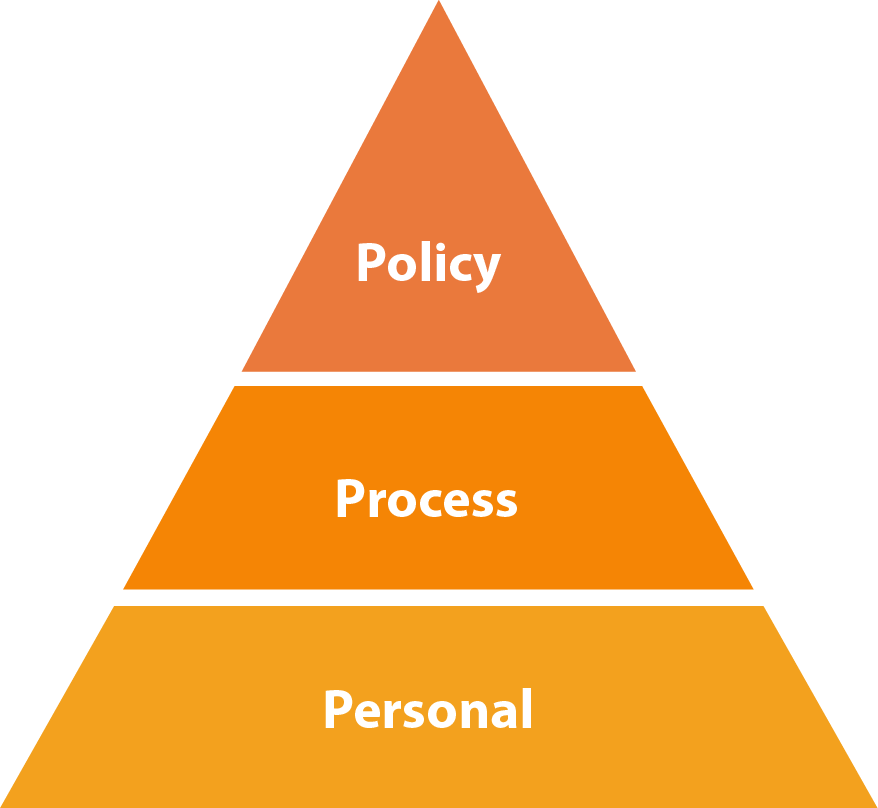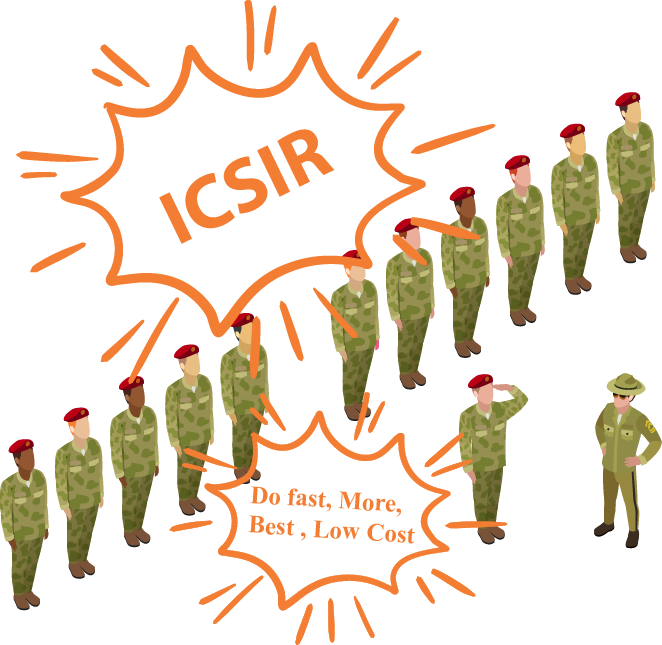Calm and patient – that’s what you are as a boss. You hear your people talking behind your back, making fun of you for not being strict enough but you just turn a blind eye towards it. You place too much care on your people’s emotional state, so you end up not scolding them when it is actually rational for you to do so. You avoid criticising your people. You let them do anything they want. You want them to see you as a good boss and you think being more gentle towards their emotions is the best approach. Fine, you are likeable; but are your people able to perform their best when it comes to their job? Is the quality of their work per your expectations? If your answer is no, do you think being a good boss who takes care of the emotions of your people is the answer to help your business succeed? Think again.
Taking care of your people covers various aspects, not just emotions. If you do not know how to take care of your people, you may end up having people in your management that are unable to produce high-quality work. Not only that, tasks assigned cannot be completed by your people on time. What do you get? Customer complaints due to poor productivity, which leads you to losing money and gaining a poor reputation in the eyes of customers.

In the long run, sales drop due to your failure in retaining customers from poor delivery of products and services.
However, sometimes the problem does not lie within your people; it lies within yourself as a boss. You may be too much of a perfectionist, you are too concerned about details.
Ends up, you take control of everything yourself because you do not trust your people’s quality of work. Does this work for your business? When the amount of work gets too overwhelming, are you still able to handle everything? As a boss, you must have a good sense of management. You need to be able to differentiate what is necessary for you to manage, and what is not. Maybe you can opt to appoint a manager to ease your burden, but how effective is this compared to YOU managing the business yourself?
Ken works in a multinational company for many years and has a strong capability of managing people in his big team. His style of managing his team is so effective that Ken is always able to achieve the performance targets set by the management. Ken felt this was his strength and he should make full use of his potential; and therefore, Ken decided to start his own business.
Being a fresh business, Ken prioritises his relationship with his people. Due to this, he treated his first few staff like his friend. He thought a good relationship would motivate them to do their job better. Unfortunately, it did not turn out like he imagined. Their work produced was not up to standard and not able to meet specified objectives.
Hence, Ken began to change his management pattern. He required them to furnish him with all the details, standard operating procedures (SOP), and checklists related to their work.

He ensured his people gave him a strong supporting reason on why their work was done in the particular manner. Ken’s management became very procedure-oriented and his people started to dislike it. Instead of boosting their motivation to work in a more organised manner, his people’s morale started declining drastically. Ken felt lost, his business was not going in the direction he wanted but at the same time he did not want to terminate his people. Ken recalled knowing a CFO that is capable of managing people well, and therefore, he hired the CFO to help him manage his company.
Good management is crucial to ensure your business is operating in a clear and organised manner, the backbone to a successful organisation. Management is a set of principles that relates to planning, organising, directing, and controlling people or resources towards the company’s goals. As a boss, managing people is the number one skill you must have. There are two ways to manage people, depending if you are people-oriented or task-oriented.

1. People-oriented: Using people to manage tasks
Managing people from this perspective means that you focus on your people’s self-actualisation. You motivate your people by acceptance towards their personal goals and give them a sense of belonging in your organisation. This is to make sure they have a sense of achievement and find purpose in getting work done effectively.
2. Task-oriented: Using tasks to manage people
Using tasks to manage your people means that you place high emphasis on processes, procedures, and policies that must be fulfilled to get a job done. You may require them to strictly obey SOPs and prepare checklists. Everything is clearly outlined in a step-by-step manner.
To help you understand management better, you could use a Management hierarchy. Moving from the lowest level to the topmost, the 3Ps are ‘personal’, ‘process’, and ‘policy’.

Personal : Human relations are most essential, especially in family businesses. A good relationship between you and your people, customers and suppliers, is the key to effective and successful management.
Process : Specific written processes in getting work done is made available, especially for tasks that are repetitive and too costly to have errors.
Policy : Policies are not just for bigger companies. It determines if your business is operational even if you are not present in the business, where your people can obey laws and regulations, while you work on the business.
To ensure you have the best management process in practice, you can follow a simple seven-step process. It is very important for you to see things from both the perspective as a boss as well as your people’s perspective. This is to allow you to have a better understanding of your people’s mindset and what is expected out of them from your practice of management. This approach is called the 7-Step People Process (IC-SIR).
I = Instruction
C= Collection
S= Steps & Statement
I = Implementation
R= Review & Result

7-Step IC-SIR (Boss’ perspective)
1. INSTRUCTION – Provide a work instruction or order
You have determined that something needs to be done. You therefore inform your people about it to make them be aware of the work. Tell them your objectives.
2. COLLECTION – Allow your people to collect relevant information
Give your people sufficient time to do their research to obtain necessary information so that they have a clear understanding of the work that needs to be done.
3. STEPS – Discuss the steps and method of conducting the work
Do not spoon feed your people on how they should conduct the work. Let them put on their thinking hats to determine how they should get the work done. However, you may discuss with them to improve the process flow.
4. STATEMENT – Review the statement of conduct
Let your people plan out the timeline of getting the work done. Review it to make sure it is relevant and fits your desired timeline as well.
5. IMPLEMENTATION – Determine when implementation commences
As a boss, you have the power to set when you want to begin the implementation of the work and when you want it to be done. However, trust them to get it done for at least one time and then let it go in this step.
6. REVIEW – Review and evaluation of employee’s work
Observe your people’s execution on work and give a timely review on longer and crucial tasks and evaluation to make room for corrections or improvements.
7. RESULT – Give feedback on results
The final evaluation. Give them feedback on the outcome of their work and whether it meets the objectives. Start by giving praises for excellent performance, and then provide emphasis on areas where they could improvise their work done in the future. Close the feedback with praise again or just do a small celebration to keep their motivation going.
Being the best boss is not being a manager. Instead, you are ultimately a teacher, because once your people learned, they would remember better. What they remembered is what you influenced. So yes, good Leadership is all about influencing people.
7-Step IC-SIR (People’s perspective)
1. INSTRUCTION – Accept work instruction or order
Pay attention to your boss’ work instruction or order and be aware of what the objectives are and take note
2. COLLECTION – Collect relevant information
Do your own research to understand the background or mechanics of work to be done better. Feed your curiosity and find the best practices which will help you in getting work done effectively.
3. STEPS – Consider and decide the steps and method of conducting the work
Use critical thinking to decide how you are going to get the work done. Outline the steps to achieve a smooth flow. Discuss with your boss where necessary.
4. STATEMENT – Develop a statement of conduct
Based on the steps determined, construct a timetable to help you have a clear view on the timeline on when the work is done. It gives better work organisation and ensures you get things done on time.
5. IMPLEMENTATION – Be aware of the implementation
Always be alert of your boss’ desired outcome on when the implementation will commence. Once implementation commences, follow the approved statement of conduct closely.
6. REVIEW – Review and evaluation of own work
Ask yourself, “is my work effective enough to achieve the objectives?”. If no, take corrective actionimmediately. Also, focus on making improvements on how your job could fulfil ‘do FAST, do MORE, do BEST, at LOW-COST’.
7. RESULT – Report the results to the boss
Once everything is done, report the results of your work to your boss. Tell them how you felt and how you could make your work done even better. No result is considered failure, it is just a feedback and an opportunity to learn to do it better.
If you want to learn more on management skills and how to take your business to next level, my book NEXT LEVEL BOSS – THE SECRETS reveal business secrets so that you can straight up model, simulate and duplicate to Read, Recruit and Lead people, Search, Spend and Multiply money.

Not everyone may want to fully comply with all the seven steps above. Maybe it is due to the fact that the company has more than one boss, and as a result the employee does not know who to report to. I have seen cases like this before, and it could easily be solved by having an organisation chart. I utilise an organisation chart to clearly outline who needs to communicate with whom based on their positions. It is good news that this is effective, as my people do follow the organisation chart closely in reporting to their heads. Keep it at a minimum, whereby for every department or project, there is only one boss to report to. If you still do not understand why having only ONE boss is very important, imagine a company having a husband and a wife as the bosses. Now, who do you choose to listen to? If you choose to listen to the husband, you may offend the wife, and vice versa, right? So play it safe – just stick to having ONE BOSS!
With the help of the CFO, Ken finally had highly appraised management skills. His company grew bigger and he hired approximately 100 employees. His management practice was so good that every worker was very happy to work with him – he was being a best manager by letting his people follow processes. The quality of their work was top-notch, achieving performance standards. Ken proved that yes, being a good boss is letting people follow policies; but what makes your company grow bigger is having the best management processes.
